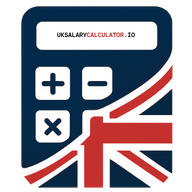
Freelancer Take-Home Pay Calculator (UK)
October 10, 2025
Calculating your salary as a freelancer in the UK can be a challenge. Unlike traditional employment, you're responsible for handling your own taxes, National Insurance, and business expenses. The rules around IR35 can add another layer of complexity. This guide and interactive tool are designed to cut through the confusion, giving you an instant and accurate estimate of your true take-home pay.
Freelancer Take-Home Pay Calculator
Estimate your net income after all deductions for the 2025/26 tax year.
Annual Take-Home Pay
£30,082
Monthly Take-Home Pay
£2,507
Income Tax:
£12,972.00
National Insurance:
£1,945.80
Effective Tax Rate:
29.84%
How Does the Freelancer Take-Home Pay Calculator Work?
Our tool simplifies the complex process of calculating your net pay. Here’s a step-by-step breakdown of the logic it uses:
- Calculates Taxable Profit: It starts with your gross income and subtracts your allowable business expenses. The result is your taxable profit, which is the figure HMRC is interested in.
- Applies Your Personal Allowance: The calculator deducts the standard UK tax-free Personal Allowance (£12,570 for 2025/26) from your profit.
- Calculates Income Tax & NI: It then applies the appropriate Income Tax and National Insurance (Class 2 and Class 4) rates to your taxable profit.
- Handles Deductions: Any pension contributions or student loan repayments you've entered are calculated and deducted.
- Adjusts for IR35: If you select 'Inside IR35', the calculator switches to a PAYE model, treating your income as if you were an employee, which involves different tax and NI rules.
What Taxes Do Freelancers Pay in the UK?
As a self-employed individual (sole trader), you are responsible for paying:
- Income Tax: The same income tax bands apply to you as they do to employees. You pay tax on your profits over the Personal Allowance.
- Class 2 National Insurance: A flat weekly rate, payable if your profits are over the Small Profits Threshold. For 2025/26, this has largely been reformed, but voluntary contributions can still be made to maintain your State Pension record.
- Class 4 National Insurance: A percentage-based contribution paid on your profits between the Lower and Upper Profit Limits. Our NI Calculator can provide a more detailed breakdown.
What About Expenses and IR35 Rules?
Allowable Expenses are the costs you incur solely for the purpose of running your business. Claiming them is crucial as it reduces your taxable profit, and therefore your tax bill. Common examples include office supplies, travel costs, software subscriptions, and accountancy fees.
IR35 (Off-Payroll Working Rules) determines your employment status for tax purposes. If your contract is deemed 'Inside IR35', you are essentially treated as an employee and taxed at source (PAYE). If you are 'Outside IR35', you are genuinely self-employed and are responsible for your own taxes. Our Contractor Calculator provides a more detailed comparison.
Tips for Maximising Your Take-Home Pay
- ✓Claim Every Allowable Expense: Keep meticulous records of all your business outgoings. Every pound you claim in expenses is a pound you don't pay tax on.
- ✓Use Your Pension: Personal pension contributions are a highly effective way to reduce your tax bill. The money you contribute benefits from tax relief. See our guide on pension tax relief for more.
- ✓Consider Incorporation: As your income grows, operating as a limited company instead of a sole trader can be more tax-efficient. This allows you to pay yourself a combination of a small salary and dividends. It's best to seek advice from an accountant on this.
